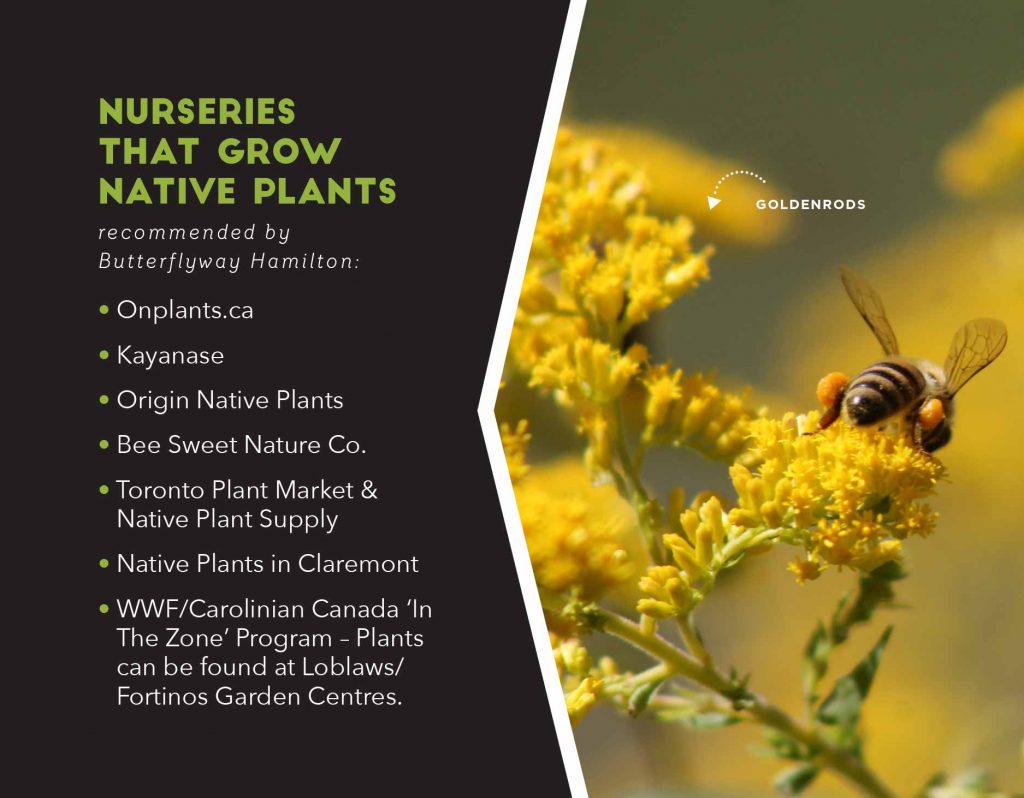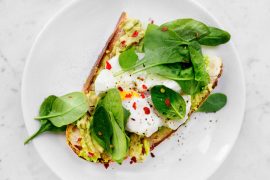Think you’re powerless to help the environment? Think again. A patch of soil is all you need to support pollinating insects and birds. You can easily transform a garden bed, or even planters on a balcony, into a colourful habitat that’s brimming with life.
What’s all the buzz?
Over time, garden centres have introduced increasingly “showy” plants that are easy to grow. Unfortunately, these human-bred cultivars support only a fraction of the wildlife that native plants do. The good news is that any home gardener can help rebuild lost habitat and renew the ecosystem.
Pollinator gardens clean our air and filter our water. They require little, if any, watering once established and don’t need fertilizer. Their extensive root systems control erosion, heal soil and absorb storm water. Most importantly, they support life and give endangered pollinators a fighting chance.

How the magic happens
When pollinators search for food, they’re often directed by light patterns and scents that flowers give off. According to Charlie Briggs, director-at-large for Hamilton Naturalists’ Club, many insect pollinators only travel a few hundred feet from their nest to locate the native flowering plants they have co-evolved with.
“Many pollinator species have very specific relationships with certain families of plants, or even exact species that they require to continue their existence,” Briggs says.
When a pollinator recognizes its plant, it will feed on nectar, pick up pollen, drop pollen to the next plant… and essentially sustain life on this planet.
Getting started
Your pollinator garden should include various bloom colours, sizes, shapes and plant heights to attract a diversity of pollinators. More than just flowers, the best pollinator garden should also include host plants – where a pollinator lays eggs, eats and lives. Flowers are great for inviting pollinators to visit, but host plants are how you get them to stay! So include native forbs (wildflowers), grasses, shrubs and trees in your garden.
Keystone species in Ontario include asters, goldenrods, sunflowers and strawberry. Some beautiful native sedges and grasses are ebony sedge, fox sedge, switchgrass, Indian grass, and ‘big’ or ‘little’ bluestem.
“Pollinator-friendly gardens will support pollinators in every stage of their lives from larvae to adults,” says Apryl Lark, a volunteer with Butterflyway Hamilton. “This requires not only flowers that produce pollen and nectar but host plants that provide food for their larvae.”
What about balconies?
You can plant in containers if they’re large enough to support root systems and hold enough water. Containers require frequent watering. If your containers get full sun, consider planting black-eyed Susan, and a host plant such as wild strawberry or butterfly milkweed. For shade, you can plant Christmas ferns, Solomon’s seal, and wild columbine, wood asters or Pennsylvania sedge as host plants.

Where to find native pollinator plants
Mainstream garden centres don’t sell many of the true native plants that pollinators recognize. Try these sources instead:
• Nurseries that grow native species (see sidebar). Also, many gardeners order native plants from sources such as onplants.ca.
• Networking and events. Look for “Seedy Saturday” events in your area where people buy or trade seeds and plants and exchange gardening tips. Or join your local naturalists’ group, where members often sell or give away native plants.
• Harvest seeds. Many of the hardest working native flowering plants are overlooked by us on our forest and road side borders. This fall, take a paper bag and pick a few. “Common milkweed and New England aster can be easily found in southern Ontario,” Briggs says. “Ripe seeds, when sewn in your garden in the fall, will reward you with your own plants come spring time.”
Have fun creating your own little patch of paradise. Millions of life-sustaining microorganisms, insects and birds will thank you.
By Michelle Morra






